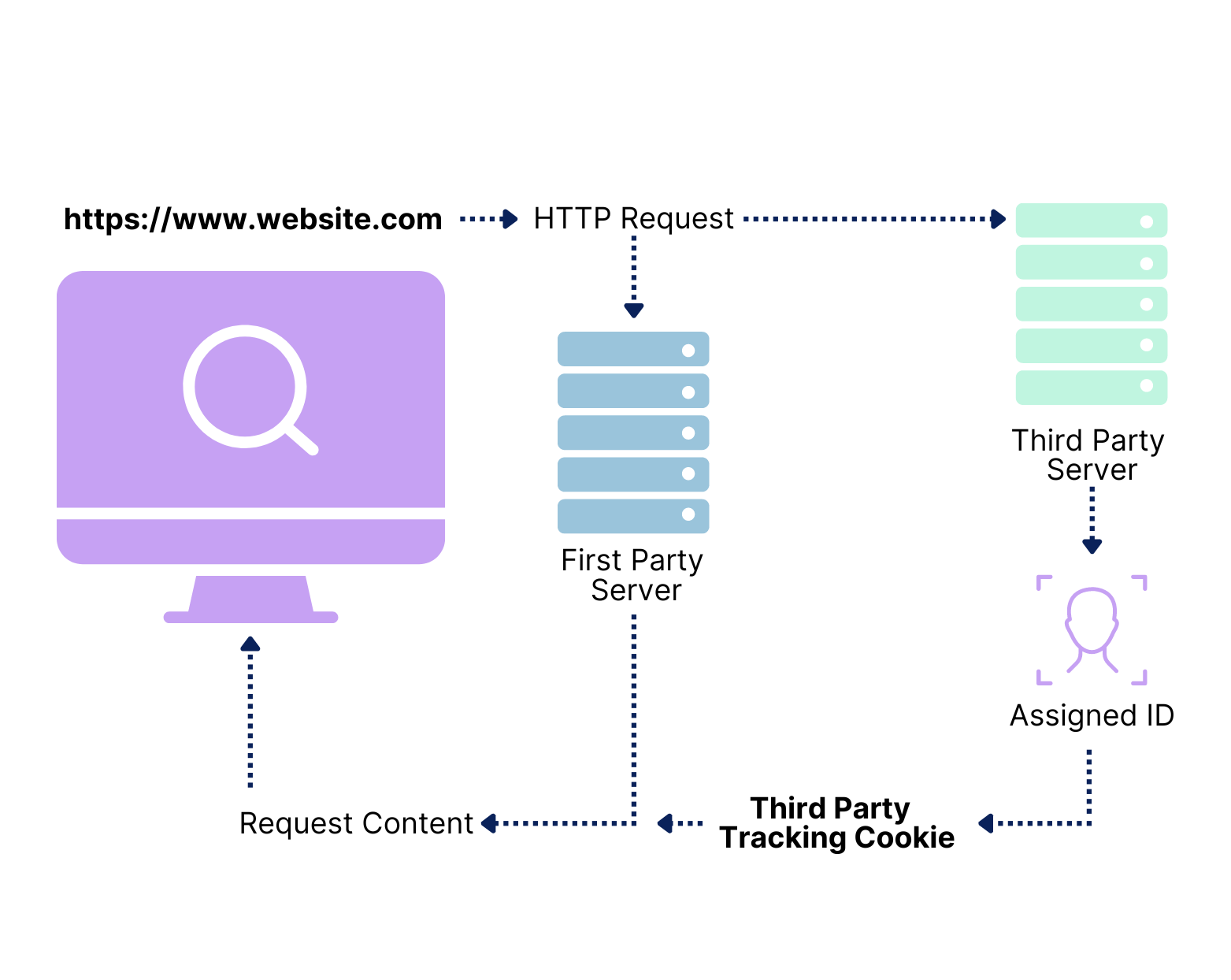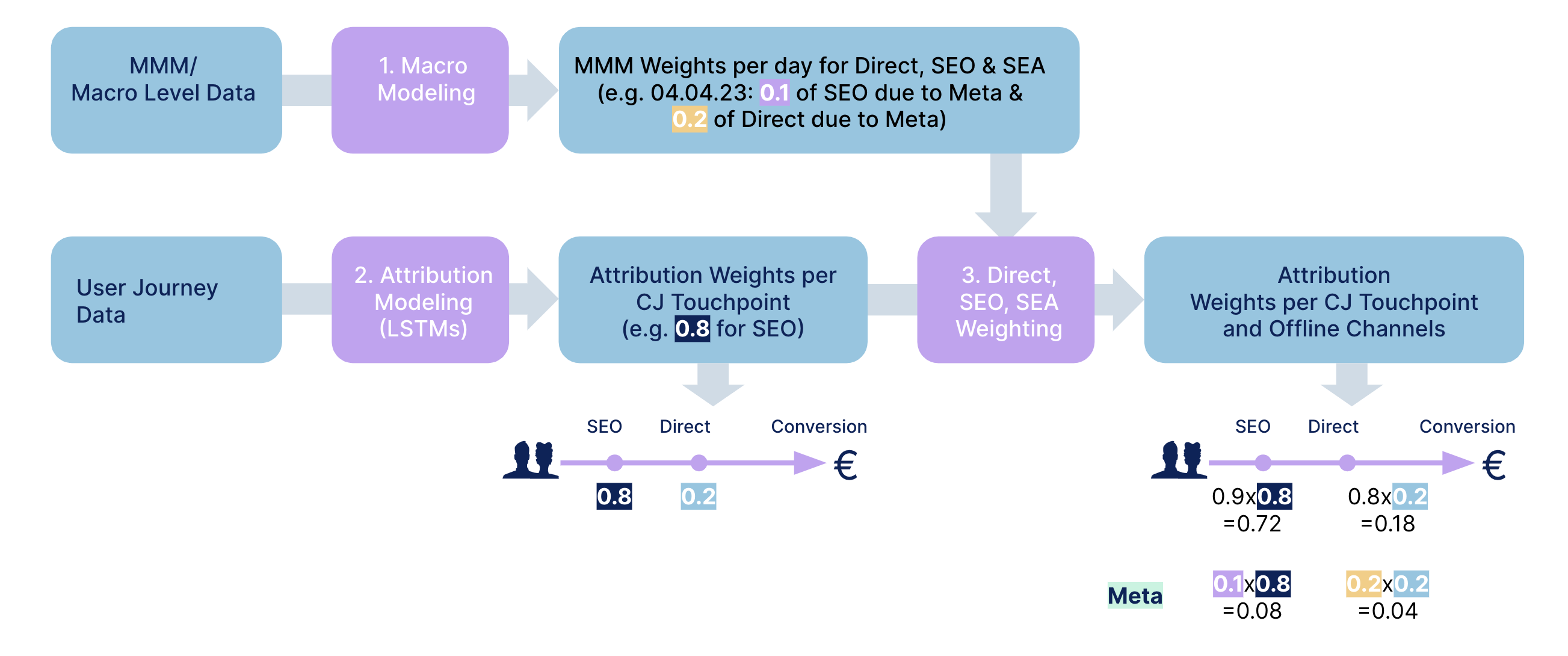Display Advertising Measurement Without Third-Party Cookies
The End of Third-Party Cookies on Google Chrome
Despite the impending demise of third-party cookies on Chrome, a recent Adobe survey found that 75% of marketers still rely on these cookies to track performance. However, as Google prepares to bid farewell to this tracking method, marketers can expect a significant shift in how they measure the effectiveness of display advertising. View-through tracking will no longer be viable using third-party cookies, and as a result, marketers will need to implement alternative technology to assess display advertising performance by 2024.
The removal of third-party cookies by Google is not something marketers will be shocked to learn. Mozilla Firefox and Apple’s Safari banned third-party cookies quite some time ago. However, now that Google Chrome is set to abolish third-party cookies, user-level display tracking as a whole will be a thing of the past.
What are Third-Party Cookies?
Though the term 'third-party cookies' might ring a bell, the specifics of their function and use could still be unclear to you. Marketers typically use third-party cookies to track a user's browsing behavior across multiple websites and collect data for targeted advertising. Third-party cookies are small files placed on a user's device by a website other than the one the user is currently visiting.
Third-party cookies have been controversial for their potential to invade user privacy and enable data collection without users' consent. As a result, Google is following others in their decision to part ways with them.
Considering Google Chrome, the most popular web browser, is also phasing out support for third-party cookies, marketers and advertisers are looking for alternative ways to track and measure the effectiveness of their digital advertising campaigns. This shift towards greater privacy and data protection will undoubtedly have a major impact on the digital advertising ecosystem, not only in the years to come but also in the near future.

Impact on Advertisers and Marketers
Losing third-party cookies is a tough pill to swallow for advertisers who rely on them to track user behavior and deliver tailored ads to specific audiences. However, as web users demand greater security and privacy, Google recognizes the need to adapt. The company is keenly aware of the impact this shift will have on the online advertising industry and has been collaborating with advertisers since the initial announcement in 2020 to ensure a seamless transition to the next phase of marketing performance tracking.
So, just how exactly will the removal of cookies on Chrome impact marketers?
Measurement and Attribution
The end of third-party cookies will also affect how advertisers measure and attribute the success of their campaigns. View-through tracking, which relies on third-party cookies to track user views of display ads, will no longer be viable. Advertisers will need to rely on alternative measurement methods, such as UMM and multi-touch attribution, to estimate the impact of their display ads.
Privacy and Security
Marketers have always had to tread carefully regarding the privacy and security of their customers' data, but the need is now even more significant. With the elimination of third-party cookies on Chrome, marketers will need to find ways to access accurate, transparent data to inform marketing decisions, without breaching GDPR - something which is often easier said than done!
Navigating the Post-Cookie Landscape
As we move into an era that prioritizes privacy and data security, marketers are on the hunt for solutions that can replace the functionality of third-party cookies without compromising user trust. While this may seem like a daunting challenge, it is also a unique opportunity for innovation and progression in the digital advertising industry.
UMM offers a holistic and unified means of estimating display ad impact on organic search, branded search, and direct visits. This breakthrough solution uses statistical modeling techniques to measure the effectiveness of marketing activities, even in the absence of user-level data. UMM leverages aggregated data, ensuring privacy compliance while still providing the insights you need to optimize your marketing strategies.
So, let's delve a little deeper into how this solution works and how it can revolutionize your marketing measurement in the post-third-party-cookie era.
The Post-Third-Party-Cookie Marketing Measurement Solution
Unified Marketing Measurement (UMM) is the solution for marketers who want to measure the impact of marketing activities and their contribution to revenue with complete transparency in a third-party-cookieless world.
UMM uses statistical modeling techniques like time-series analysis, regression analysis, and marketing mix modeling to track the impact of marketing activities even when only aggregated data is available. This makes it possible to measure the effectiveness of offline marketing channels like print and OOH on a user and customer journey level.
To implement these alternative measurement methods, marketers will need to gather aggregated data on display ad views and costs per day from platforms like Google Display Network, Facebook, and other programmatic platforms. This can be done through standard API integration and ad platform integration tools, such as Funnel.io, Adverity, or Fivetran.
In addition, to use UMM and multi-touch attribution (MTA) for measuring display ad performance, marketers will need to collect historical and daily aggregate data from organic search, branded search, and direct visits (baseline traffic). These data points will serve as the target variables for UMM and will require the creation of at least three MMM/UMM models (one for each target variable).
Estimating the Impact of Display Ads with UMM and MTA
The resulting model allows marketers to estimate the impact of display ads on organic search, branded search, and direct visits daily. Adtriba's data-driven multi-touch attribution assigns attribution weights to each touchpoint in a customer journey, including organic search, direct search, and branded search, to help determine the impact of each touchpoint on the conversion event.
Here's an example to help you understand how the new approach works. Imagine a customer journey where a person makes a €100 purchase after interacting with different touchpoints, including an SEO touchpoint on April 4, 2023. This SEO touchpoint is credited with having a 80% impact on the conversion event, or €80.
But here's where it gets interesting, Marketing Mix Modeling has estimated that 10% of the SEO impact on April 4th was generated by prospecting campaigns running on Meta. So, for this particular customer journey, 10% of the 80%, or €8, should be attributed to the Meta prospecting activity.

The process would be similar for other touchpoints, such as direct and branded search, although the UMM model and hence weighting for each day would differ. By aggregating the attribution data for all customer journeys that included touch points on a specific day, marketers can estimate the impact of their prospecting campaigns on different touchpoints. This approach can be used for all display tactics that an advertiser uses, allowing for a more comprehensive and unified way of measuring the impact of display advertising, and eliminating the need for third-party cookies.
To make more informed decisions and allocate their budgets with precision, marketers need to avoid relying on guesswork in the dynamic realm of advertising. Instead, gaining access to a holistic view of their activities can truly be transformative. By embracing the Unified Marketing Measurement (UMM) approach, marketers can optimize their strategies, enhance their decision-making capabilities, and unlock the potential for remarkable success.
UMM also allows marketers to seamlessly measure display ads across multiple devices and browsers. In today’s world, having access to cross-channel interactions is crucial, as it’s important to consider that users may interact with ads on various platforms and devices. Thus, providing a complete view of user engagement enables marketers to optimize campaigns based on user behavior and allocate resources effectively for maximum impact.
Independent Measurement for Meta
Traditionally, Meta has presented certain obstacles when it comes to independently tracking user-level data. Meta's ecosystem is closed, which means brands often have to rely on their analytics and reporting tools for performance measurement, which may not always align brand's unique tracking needs. This reality has created a blind spot for many marketers trying to assess the true impact of their Meta campaigns.
However, UMM brings a solution to this long-standing issue. With UMM's statistical modeling techniques, brands can effectively measure the impact of their advertising activities on Meta in an unbiased manner, independent of any company-specific data analysis tools provided by the platform itself. This approach ensures a level of transparency and data ownership that was previously difficult to achieve with Meta.
Greater Accuracy Across DSPs and Social Platforms
In the past, display view tracking was predominantly used for Demand-Side Platforms (DSPs), often ignoring social media platforms. This situation resulted in an incomplete portrayal of campaign performance, as the valuable insights gained from social media - a significant element in today's digital advertising environment - were not measured with equal precision or detail.
The application of UMM addresses this issue, offering a well-rounded perspective of display ad performance across all channels, incorporating both DSPs and social platforms. By gathering data from multiple sources and applying advanced machine learning, UMM identifies complex interactions among different marketing touchpoints.
Consequently, this allows brands to acquire an all-encompassing perspective on their marketing activities within the ever-growing digital advertising ecosystem.
Conclusion
The Future of Marketing Measurement Without Third-Party Cookies
As Google prepares to phase out third-party cookies from its Chrome browser, marketers are bracing themselves for the inevitable impact on their ability to measure display advertising effectiveness. With view-through tracking becoming increasingly challenging, marketers must seek out new methods to accurately gauge the performance of their display ads.
Thankfully, Adtriba has stepped in with a Unified Marketing Measurement approach that offers a holistic and unified means of estimating display ad impact on conversions and sales. Failing to adopt an alternative to third-party cookies could result in inaccurate data and ineffective marketing campaigns, an outcome all marketers should strive to avoid.
Don't let the end of third-party cookies on Chrome catch you off guard. Book a demo of Adtriba Core today to learn more about how Unified Marketing Measurement can help you accurately measure the impact of your display advertising.